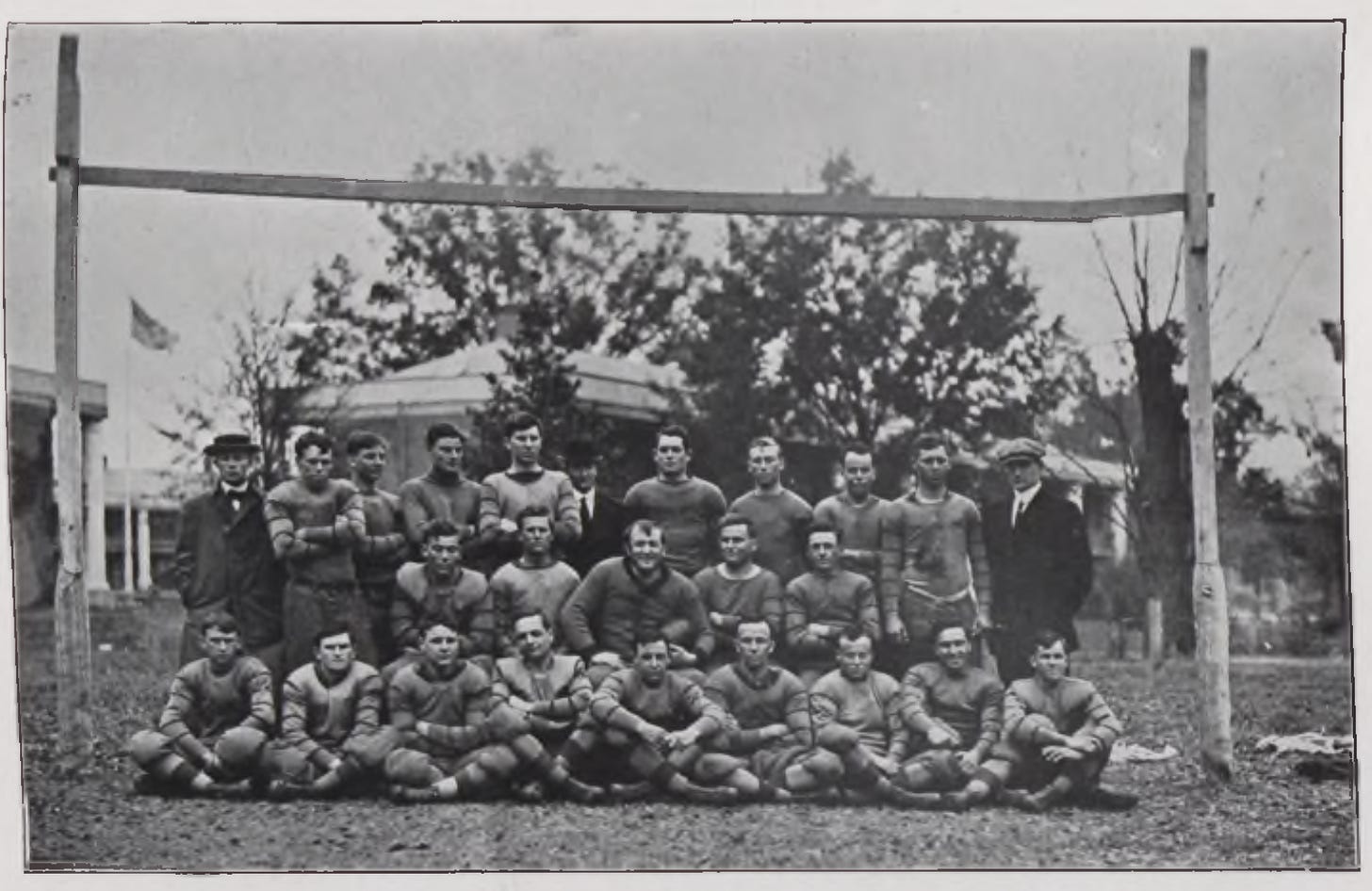Today's Tidbit... The Shape Of Goal Posts Past
Other than the painfully ugly football fields that come in colors other than green, fields are highly regimented nowadays. Properly shaped, correctly striped, and appropriately flat or crowned, they are functionally the same, regardless of differences in midfield logos and end zone decorations.
Likewise, the goal posts found around the country are essentially the same. Some locations use the H-style goal posts with two posts, but most use the slingshot or fork style with a single post planted a few yards behind the end line. Either way, the crossbars are straight and parallel to the ground, and the uprights are similarly straight, standing perpendicular to the field.
That was not always the case. Back in the day, teams struggled to ensure their fields had grass, were properly mown and marked, and had regulation goal posts at both ends. Recognizing the latter point, I've gathered images over the last few years of goal posts that would not be acceptable today but were considered close enough at an earlier time. So, here are the qualifying (or non-qualifying) images collected to date.
Some posts were made of raw timber rather than milled lumber. While the posts were upright, they had the slight twists and turns found in the natural world.
Others used milled lumber but failed to ensure the uprights were perfectly upright or stayed that way.
The previous examples were goal posts used by small-town high schools, so perhaps we can forgive their sins. But there have also been big-boy colleges with goal posts so shoddily built they would be rejected for a Cub Scout project today. Leaving that mess upright long enough for the wood to warp only worsened things.
The poor quality of goal posts during earlier football eras is not surprising, given the poor quality of uniforms and other game elements. Like now, teams made do with their resources and were mostly happy to be on the field competing with a team from another school or town.
Football Archaeology is reader-supported. Click here to buy one of my books or otherwise support the site.







Side question: when was the first recorded goal post tear down for a big win celebration?
Thanks. I've been collecting old images for some time and began buying and/or noting those with unusual goal posts. I waited until I had a critical mass to prep an article.